Highlights
Coral reefs are unique marine ecosystems. They face multiple threats including more frequent and severe marine heat waves due to climate change. These researchers monitored a coral reef research site from 2018 to 2020 during two record-setting marine heat waves.
The researchers analyzed changes in the responses of corals and their microbiomes for signs of acclimatization, resilience, or resistance to heat stress. The results showed that some coral species and their microbiomes seem to retain a memory of heat stress in the wake of a heat wave and become more resilient in subsequent heat waves. This is consistent with the observed phenomenon of ecological memory.
Future research will continue to identify specific, stress-induced changes in the coral microbiome that may function as sources of ecological memory for corals. Ultimately, the researchers hope their findings will lead to improved strategies for coral reef conservation.
Did you know that coral reefs are living organisms? What looks like a stationary rock or plant is actually a colony of tiny animals called coral polyps, from the same group of animals as sea anemones and some jellyfish. Coral polyps and the reefs they create are facing numerous threats to their survival, including more frequent and severe marine heat waves due to climate change. New research by Dr. Rebecca Vega Thurber, Emile F. Pernot Distinguished Professor of Microbiology at Oregon State University, graduate student Alex Vompe, and colleagues shows the resiliency of some coral species to climate threats such as heat stress and offers new possibilities for conservation of this important marine ecosystem.
Coral Reef Ecosystems
Coral polyps cluster together in formations known as colonies.
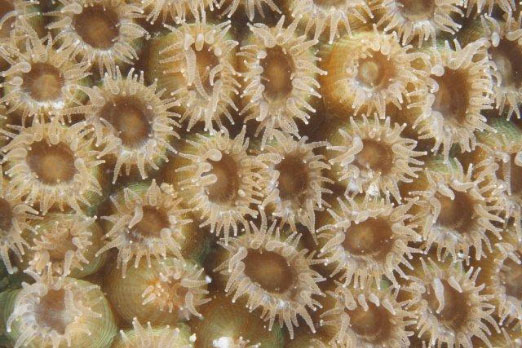
Figure 1. Colony of coral polyps.
[Source: https://www.epa.gov/coral-reefs/basic-information-about-coral-reefs]
They live together with a community of microorganisms including bacteria, viruses, and microscopic algae. The microbial communities hosted by coral polyps are called the coral
microbiome.
Coral polyps live in
symbiosis
with the microbiome. In fact, corals have mutualistic relationships with some microbes, where both species benefit: the host and the microbe provide nutrition and protection to each other. For example, microscopic algae, or microalgae for short, produce energy through
photosynthesis.
These microalgae are symbiotic organisms that live inside their hosts, known as
endosymbionts.
Endosymbiotic microalgae produce up to 95% of the energy for coral polyps. Other coral-dwelling microbes support their hosts in capturing nutrients from the surrounding environment, and they also benefit from these nutrients. Additionally, the coral polyp hosts provide physical protection to the microorganisms, and the microbiome helps protect the corals from pathogens and disease.
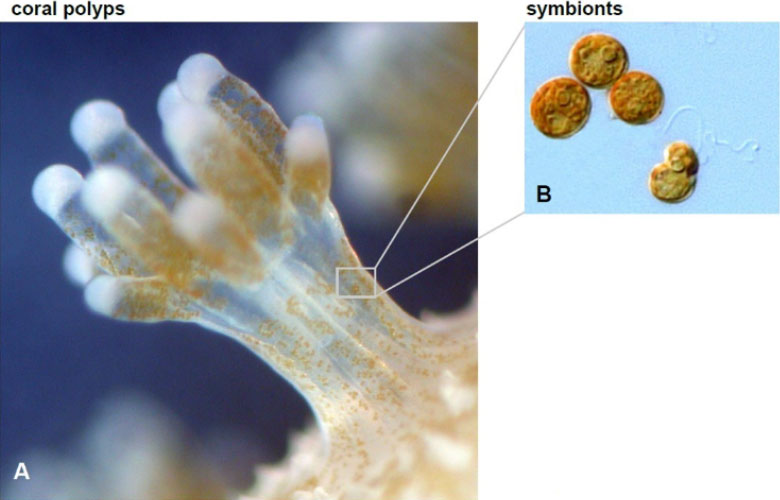
Figure 2. Endosymbiotic microalgae in the family Symbiodiniaceae (right) live within the coral polyp (left).
[Source: https://www.oist.jp/image/coral-polyps-and-their-symbionts]
According to Alex Vompe, you can think of coral reefs as “part animal, part plant, and part rock.” The animal is the coral polyp, the plant is the endosymbiotic microalgae, and the rock is the
exoskeleton
produced by coral polyps made of calcium carbonate, a mineral found in many rocks.
Coral polyps and the reefs they support provide the foundation for the most
biodiverse
marine ecosystems. “You can think of coral reefs as the tropical rainforests of the ocean,” added Alex.
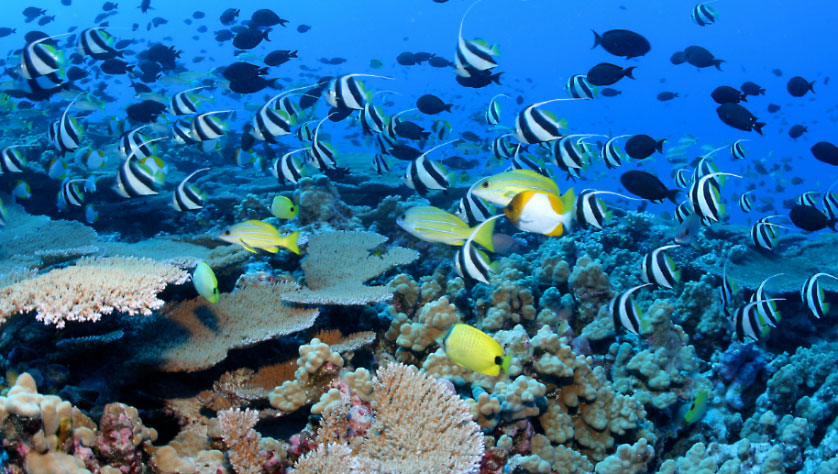
Figure 3. Rapture Reef, French Frigate Shoals, Papahānaumokuākea Marine Monument, Hawai’i.
[Source: https://www.noaa.gov/education/resource-collections/marine-life/coral-reef-ecosystems]
Coral reefs cover less than 1% of marine environments yet support one-quarter of all marine life on the planet. In addition, coral reefs support over 500 million people around the world as a source of food, income, and coastal protection.
Threats to Coral Reefs
Coral reefs are found in tropical waters all over the world, from the Great Barrier Reef in Australia to the Florida Keys Reef Tract off the coasts of Florida.
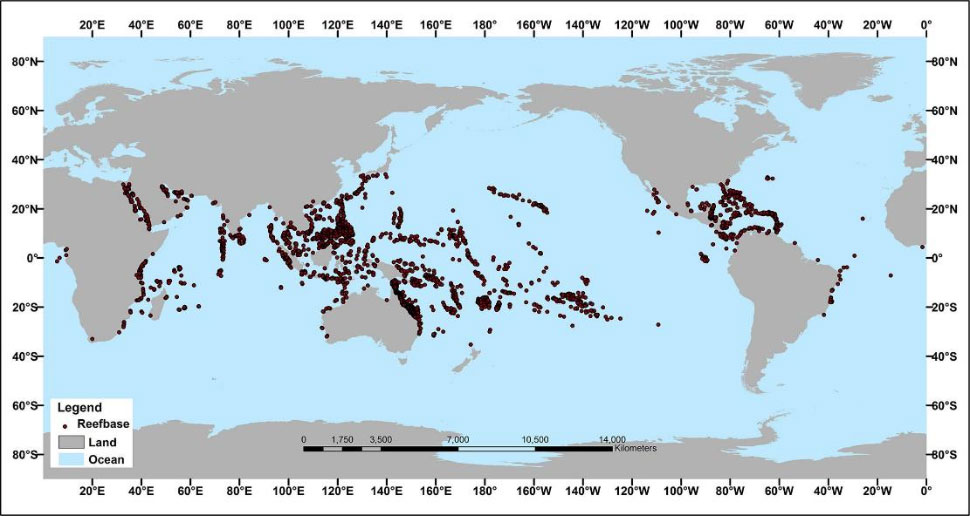
Figure 4. World map of coral reef locations.
[Source: https://oceanservice.noaa.gov/education/tutorial_corals/media/supp_coral05a.html]
Healthy reef ecosystems are incredibly strong in the face of stormy weather, absorbing up to 90% of wave energy and protecting coastal communities who live nearby. However, reefs are also fragile and sensitive to changes in their environment. This makes coral reefs vulnerable to a variety of threats including:
- Direct damage to coral structures. Corals are sensitive to touch and can be easily damaged by tourists, boat anchors, and buildings that encroach on their habitat.
- Pollution. There are many ways that pollution enters the water including sewage, agricultural waste, and industrial waste. When these substances end up in the ocean, they bring chemicals and bacteria that can be toxic to both humans and coral reefs alike.
- Overfishing. Coral reefs rely on plant-eating fish to feed on the surrounding algae. Fewer fish due to overfishing can lead to increased levels of algae (known as algal blooms) that can block sunlight and kill off the reef.
- Climate change. Rising and warming waters due to climate change impact coral reefs in a variety of ways.
- Rising sea levels. Coral reefs are found on coastal shorelines where the microalgae have access to enough sunlight to provide energy. As sea levels rise, these reefs may become submerged deeper into the ocean, resulting in less access to sunlight and slower growth.
- Stronger storms. Climate change has already resulted in storms of increasing frequency and intensity. This increases the possibility for direct damage to coral structures.
- Ocean acidification. As more carbon dioxide is absorbed by the oceans, ocean waters become more acidic. Under acidic conditions, the coral exoskeletons begin to dissolve, making the corals more vulnerable to storms, disease, and bleaching.
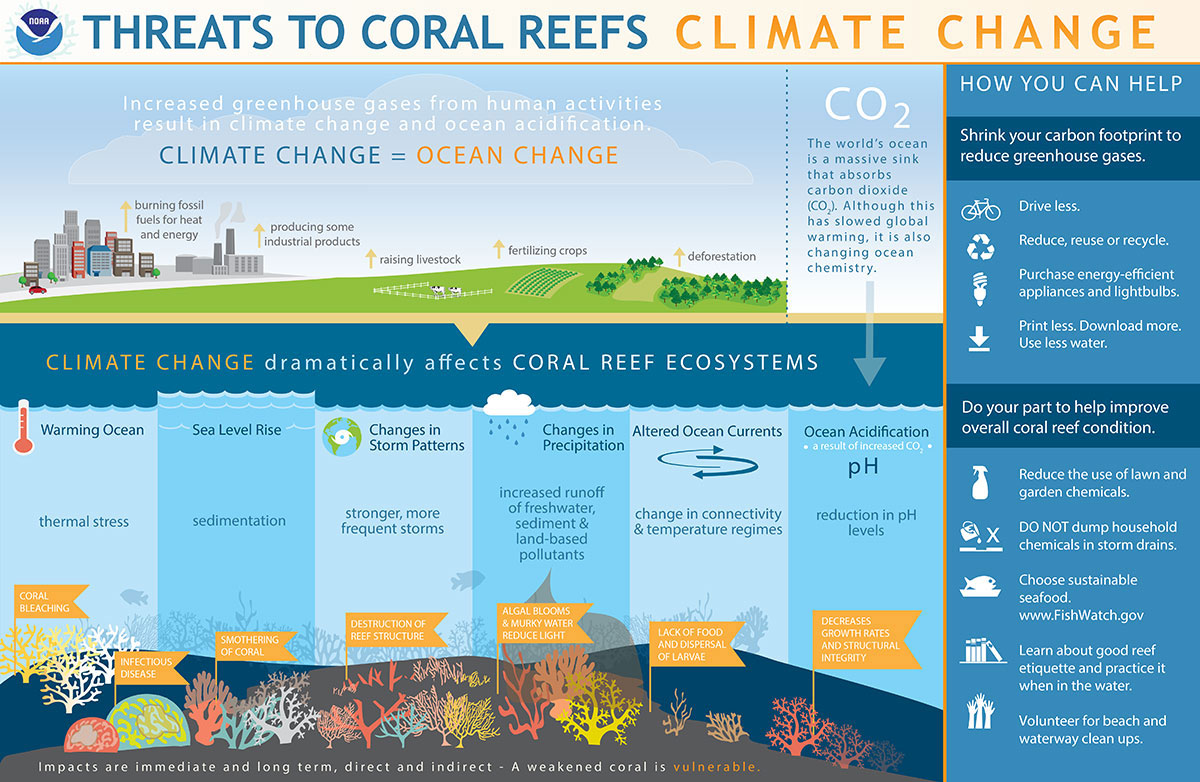
Figure 5. Climate change threatens coral reef ecosystems by causing ocean warming, rising sea levels, changing storm patterns and precipitation, changing ocean currents, and ocean acidification.
[Source: https://oceanservice.noaa.gov/facts/coralreef-climate.html]
Another ongoing threat to coral reefs due to climate change is ocean warming. Warmer ocean temperatures negatively impact coral reef ecosystems by interfering with the symbiotic relationship between coral polyps and the microalgae they host.
When the water stays too warm for too long, the coral polyps expel the endosymbiotic microalgae. Researchers do not yet fully understand why this happens. One hypothesis is that warmer temperatures and increased levels of sunlight increase the rate of photosynthesis to such an extent that the polyps become stressed and expel the algae. Since algae give coral reefs their beautiful colors, expulsion of the algae causes the reefs to turn white, an event known as
coral bleaching.
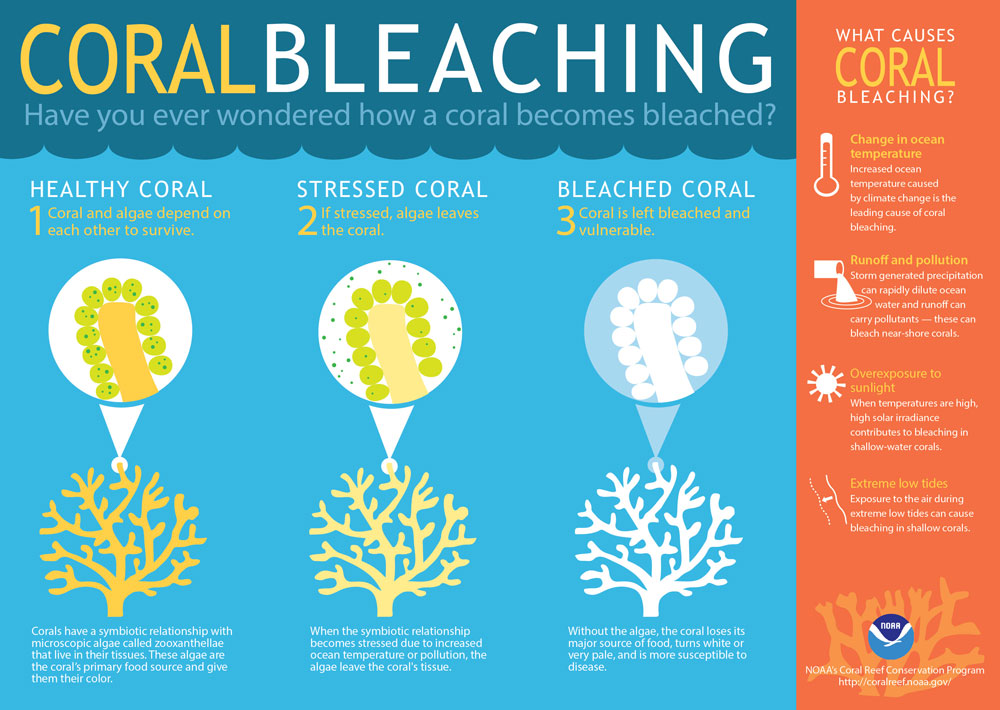
Figure 6. Corals lose their color under stress, a process known as coral bleaching.
[Source: https://oceanservice.noaa.gov/facts/coral_bleach.html]
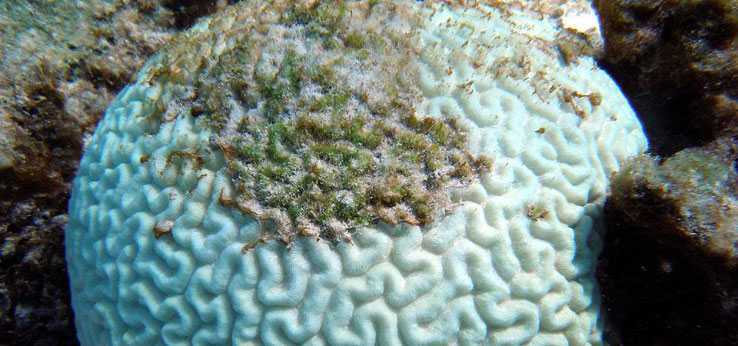
Figure 7. Bleached brain coral.
[Source: https://oceanservice.noaa.gov/podcast/dec14/dd58-coral-bleaching.html]
If ocean temperatures decrease, coral polyps may reacquire endosymbiotic algae from the water. However, if ocean temperatures remain elevated for more than 1-2 weeks, the coral polyps will starve. This is because endosymbiotic microalgae supply around 95% of coral polyps’ energy through photosynthesis.
As the coral animals die, the calcium carbonate skeletons are left behind. Without the coral polyps, the skeletal structures begin to hollow out and crumble and no longer provide as much protection for reef species or coastal communities.
Coral reef ecosystems may not be able to survive without efforts to preserve them. Ongoing research for coral conservation is focused on the mechanisms that allow corals to withstand environmental disturbances. One such mechanism that may determine how corals respond to heat stress is the coral microbiome.
Researching Coral Reef Ecosystems
Dr. Rebecca Vega Thurber is a microbiologist at Oregon State University (OSU) who studies the coral microbiome. She teamed up with OSU colleagues and collaborators at the University of California, Santa Cruz to establish a multiyear project to study changes in the coral microbiome over time.
This research took place off the coast of Moorea, an island of French Polynesia located in the South Pacific, about half-way between South America and Australia. Moorea offers a prime site for the researchers because the island houses the National Science Foundation’s Long-Term Ecological Research (LTER) Site for coral reefs. This reef has also demonstrated incredible resiliency to a variety of disturbances. For example, the current reef ecosystem emerged after 2010, when a cyclone and a crown-of-thorns starfish outbreak completely destroyed the previous reef. Crown-of-thorns starfish are native to coral reefs but can cause extensive coral damage in large numbers.
The researchers focused their efforts on three coral species: Acropora retusa, Porites lobata, and Pocillopora species. The three species are common reef-building corals at the research site in Moorea. A. retusa typically appears green or brown in color with spiky, finger-like branches. P. lobata generally appears green or brown in color and does not branch. Pocillopora corals, commonly referred to as brush corals or cauliflower corals due to their appearance, are branching, like the A. retusa, but have much thicker, rounded branches.

Figure 8. A. retusa (left), P. lobata (middle), and Pocillopora (right).
[Source: https://www.nsf.gov/news/mmg/mmg_disp.jsp?med_id=69044;
https://en.wikipedia.org/wiki/Porites_lobata;
https://www.fisheries.noaa.gov/species/pocillopora-meandrina-coral]
The overall goal of the research was to better understand how corals can adapt to environmental disturbance through changes in the coral microbiome. At the start of the experiment, the researchers identified and labeled specific coral organisms that would be sampled multiple times each year. From 2018 to 2020, members of the research team visited the research site in the spring, summer, and fall to sample the same coral organisms. At each visit, the team members took a boat from the LTER station to the reef and went scuba diving to collect samples of the labeled corals.
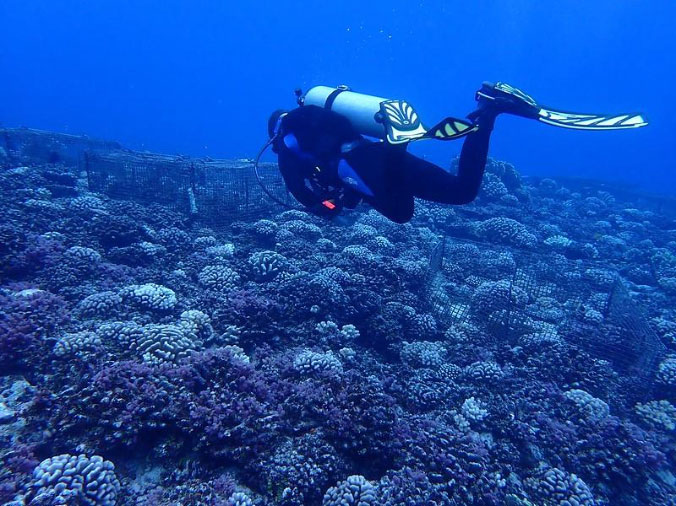
Figure 9. Alex Vompe collecting coral samples at the Moorea research site.
[Source: Oregon State University]
The researchers used sterilized tools to take tissue samples from the labeled corals. The coral samples and their microbiome were collected in sterile plastic bags and transported back to the station. Eventually the samples were brought back to OSU where they were kept frozen until the researchers were ready to process and analyze them.
Record-Setting Heat Waves
During this ongoing research project, the Moorea reef experienced back-to-back record-breaking marine heat waves in 2019 and 2020. This created a natural experiment that allowed the researchers to better understand how the coral microbiome responds to heat stress, and how this might affect coral reef survival.
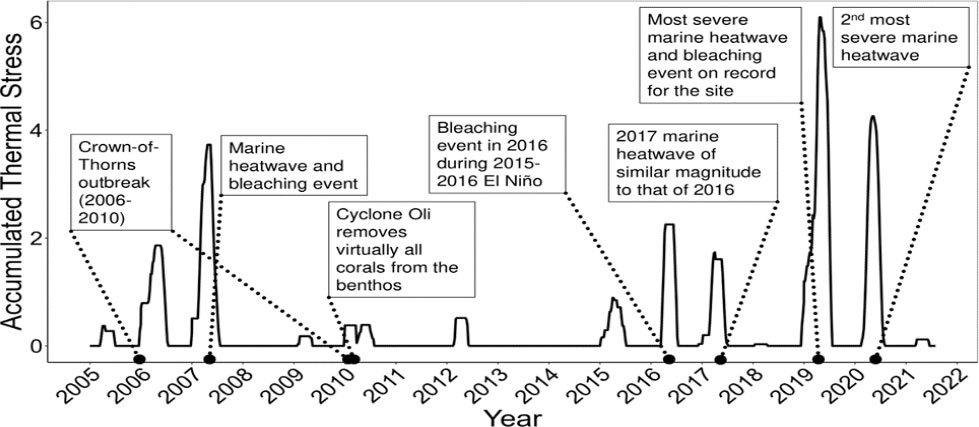
Figure 10. Recorded history of disturbance at the research site, 2005-2022. The research for the study described here took place from 2018 to 2020. Thermal stress is another term for heat stress; benthos refers to the sea floor; el niño is a weather phenomenon that causes increased ocean temperatures.
[Source: Vompe et al, 2023. Figure S7]
The researchers mapped water temperature and accumulated thermal (heat) stress during the study period. At this research site, temperatures
above 29°C (84°F) cause coral bleaching.
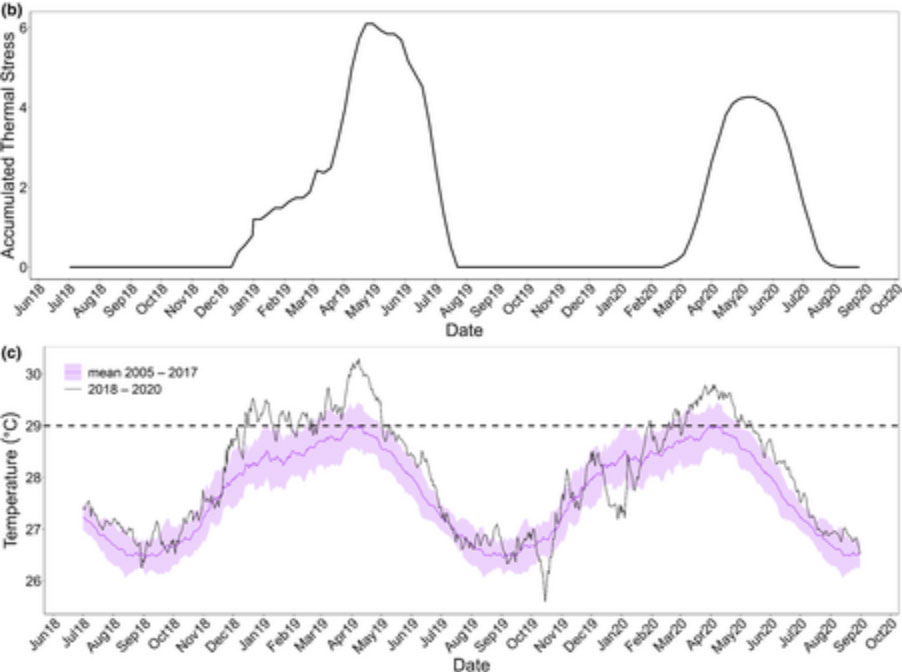
Figure 11. Accumulated thermal (heat) stress (above) and water temperature (below) of the study site 2018-2020.
[Source: Vompe et al, 2023. Figure 2]
Analysis of the Coral Microbiome
At the end of the experiment, the researchers had three types of data to analyze: environmental changes (shown above), health status of the coral hosts, and coral microbiome samples. The health status of the coral hosts was described based on observed characteristics at the time of sampling, such as bleaching and death, as fractions of coral colonies.
The coral microbiome of each sample was described using genetic analysis to better understand the diversity of species, both within a given sample and across samples. In a healthy coral reef ecosystem, both diversity within and across samples of the coral microbiome should be low. This means that there are relatively few microorganism species residing in the coral microbiome, which is dominated by beneficial symbionts, and this remains relatively stable over time. However, increases in diversity within a sample and subsequent changes in diversity across samples can indicate disturbance of the healthy ecosystem in response to stress.
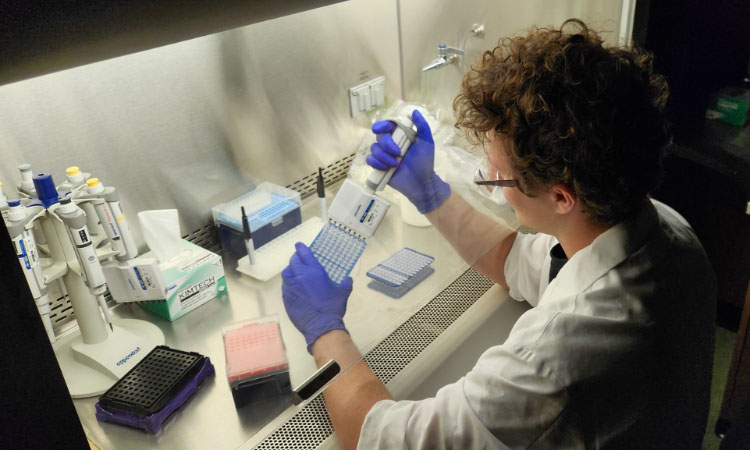
Figure 12. Alex Vompe performing genetic analysis on a coral microbiome sample.
[Source: Oregon State University]
The goal of the research analyses was to describe if and how coral species adapted to heat stress. To that end, the researchers compared coral host health and microbiome diversity before and after the two record-breaking marine heat waves in 2019 and 2020. They described the corals and their microbiomes based on their resilience to heat stress as resilient, developing resistance, or acclimatizing.
- Resilient: Disturbance was observed after heat stress but returned to baseline before the next heat event.
- Developing resistance: Microbiome disturbance was observed during an initial heat stress event. No further disturbances were observed in subsequent heat waves.
- Acclimatizing: Significant disturbance was observed during and after the initial heat stress. The microbiome did not return to baseline, but no additional disturbance was observed in subsequent heat events.
The results of the study differed for each coral species. A. retusa experienced the most bleaching of the three coral species in the 2019 heat wave, an average of 44% across sampled colonies. Coral bleaching and death were correlated with microbiome disturbance. After the bleaching event, the coral microbiome stabilized. In the 2020 heat wave, the researchers saw less bleaching, fewer deaths, and less microbiome disturbance. This result is consistent with acclimatization.
P. lobata had the highest death rate of the three coral species. Additionally, changes in the coral microbiome were observed prior to the 2019 heat wave and were not correlated with bleaching or mortality. The levels of microbiome disturbance continued to increase throughout the experiment, suggesting different processes underway, such as disease.
Pocillopora had the lowest bleaching and death rates of the three coral species. The researchers observed microbiome disturbance consistent with developing resistance after the first heat wave, and the corals and microbiomes were resistant in the second heatwave.
These results show that different coral species have different capacities to adapt to a changing ocean environment. For example, the acclimatization observed in the A. retusa microbiome might make this coral species a good candidate for coral restoration efforts due to its increased capacity to withstand repeated marine heatwaves, which are becoming more and more likely due to climate change.
Importantly, previous research has shown that A. retusa needs repeated disturbance to maintain its resilience. If it is not challenged with environmental disturbances, it is likely to die off during a severe weather event.
Ecological Memory
These results offer further evidence for a budding biological theory called ecological memory. Ecological memory refers to the ability of an ecosystem to be influenced by previous experiences or events.
Acclimatization is an important feature of ecological memory. For example, this study observed adaptive changes in the A. retusa microbiome after an initial heatwave that allowed the corals to better survive the second heatwave. In this way, the corals are said to “remember” previous heat stress events, even though they are not recalling specific memories the way humans do. “Microbiome ecological memory is a new concept,” Alex commented, “so our current understanding of this process is limited.”
The researchers are encouraged by these results. “This is one step forward for our understanding of coral reef ecosystems and the possibilities for their conservation.” Ultimately, Alex hopes this research will lead to greater awareness of the importance of coral reef ecosystems and inform better strategies to help them adapt and thrive in the face of climate change and other threats.
Alex Vompe is a doctoral student in the laboratory of Dr. Rebecca Vega Thurber at Oregon State University. His research focuses on the role of microbiomes in coral resilience in the face of climate change. The research described here is part of his doctoral thesis. When not doing research, Alex enjoys scuba diving, backpacking, and rock climbing. He is also musically talented and plays guitar, bass guitar, and piano.
Dr. Rebecca Vega Thurber is the Emile F. Pernot Distinguished Professor of Microbiology at Oregon State University. Her research focuses on the effects of microbes on the environment, including coral reef ecosystems. When not in the laboratory, she enjoys being outdoors, cooking, and doing puzzles.
For More Information:
- Vompe A et al. “Microbiome ecological memory and responses to repeated marine heatwaves clarify variation in coral bleaching and mortality.” 2023. Global Change Biology. https://onlinelibrary.wiley.com/doi/10.1111/gcb.17088
- Hackerott S et al. “Coral environmental memory: causes, mechanisms, and consequences for future reefs.” 2021. Trends in Ecology & Evolution. https://www.cell.com/trends/ecology-evolution/abstract/S0169-5347(21)00187-7
To Learn More:
- Vega Thurber Lab.
https://vegathurberlab.wixsite.com/microbiology
- Moorea Coral Reef Long Term Ecological Research Site.
https://mcr.lternet.edu/
- National Oceanic and Atmospheric Administration.
https://www.noaa.gov/education/resource-collections/marine-life/coral-reef-ecosystems
- Environmental Protection Agency.
https://www.epa.gov/coral-reefs/basic-information-about-coral-reefs
Written by Rebecca Kranz with Andrea Gwosdow, PhD at www.gwosdow.com
HOME | ABOUT | ARCHIVES | TEACHERS | LINKS | CONTACT
All content on this site is © Massachusetts
Society for Medical Research or others. Please read our copyright
statement — it is important. |

